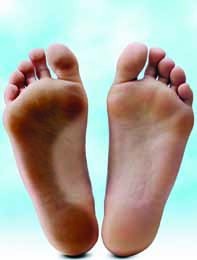Peer Reviewed
Feature Article Neurology
Peripheral nerve conditions in diabetes
Abstract
Tight glycaemic control is needed to help prevent the development of diabetic peripheral neuropathy. However, once the condition has occurred patients should be protected against the development of foot ulceration. Patient education and preventive podiatric care are priorities in people with diabetic peripheral neuropathy.
Key Points
- The most common symptomatic clinical presentation of diabetic peripheral neuropathy is loss of sensation in the feet, which is usually bilateral and symmetrical.
- Many patients have no symptoms of peripheral neuropathy even when it is found to be present based on clinical signs.
- Detection of signs of peripheral neuropathy requires careful foot examination.
- Insensate neuropathy is typically due to abnormalities in small and large nerve fibres whereas painful neuropathy may be due to purely small nerve fibre involvement.
- Peripheral neuropathy in patients with diabetes, once established, is usually not reversible.
- To help prevent foot ulceration, insensate neuropathy is managed by patient education, self-care and regular podiatry care.
- New foot complications due to diabetic peripheral neuropathy, such as foot ulceration, require urgent medical assessment to manage any infection or ischaemia and to reduce pressure at the ulcer site.
- Painful diabetic neuropathy is often difficult to control adequately. Achieving adequate symptom relief may require a trial of several different therapies. Combination pharmacological therapy usually provides the best results.
Purchase the PDF version of this article
Already a subscriber? Login here.

